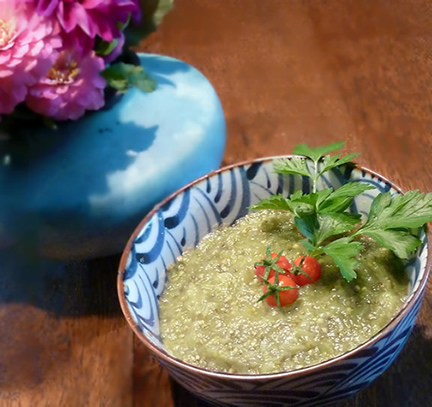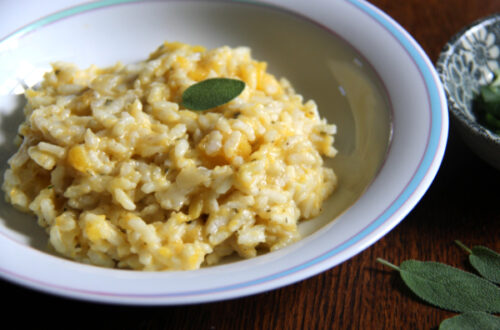Ever since my mother served up eggplant as “French fries” slathered in ketchup, I’ve been a sucker for its tasty squishiness. I’ve enjoyed it in Italian, French, Indian, Greek, Middle Eastern, Asian and African dishes. But Romanian?
I never knew Romania has its own traditional eggplant dip (called salată de vinete or vinetta), which I learned about from Julie Schecter and her sister Laurie, two people whose values and lifestyles I most admire. Julie has generously shared their heirloom recipephany, which has few ingredients yet a strict method that caramelizes the pulp and concentrates its delicate taste.
How it got here
Grandma Annie emigrated in the early 1900s from Iasy, Romania. Still a teenager, Annie was the target of the ship captain’s flirtations. But she was on her way to Mobile, Alabama, to marry the son of family friends, the Schecters. Annie went on to have five children, and one of her sons (Laurie and Julie’s father), Aaron, developed the first Century Village retirement community, only one of his many contributions toward making the world a better place.
Grandma Annie’s eggplant dip became a family staple, and when Julie was young, Annie would give her a jar of it to take to her parents. “As a kid, I couldn’t stand it—it looked disgusting!” she said. Now, of course, she craves it, and for good reason—it makes a deliciously perfect snack.
Grandma Annie Schecter’s Romanian Eggplant Dip
- Two eggplants
- One small onion, finely minced
- Salt to taste
- Sesame oil, optional
Prick the eggplants with a knife or fork and char under the broiler or on the grill. Char on one side, and then flip them over. They should be blackened, soft and deflated, and look like burnt shoes. This can take as long as an hour.
Let them cool for about 10 minutes, then drain off the oily water (the eggplant liquid may make it bitter). Scrape out the insides and discard the skin. Chop roughly. Do not put it in the blender; the pulp should retain some of its texture.
Put the eggplant into a bowl. Add the finely minced onion, salt, and sesame oil if you want, and stir. Serve with crackers or pita, or use it as a sandwich spread or appetizer.








4 Comments
Ron Randall
My grandmother arrived from Iasi, Romania around the time of the First World War. Her recipe, which I used to spell phonetically as patlejeli (in Turkish, I larned, it is Patlicali) was like yours but for three small changes:
1. She added chopped green peppers to the chopped onions;
2. She always used Mazola oil;
3. She added pepper to taste.
We always ate it on squares of slightly dried, thin-sliced white bread (like Arnold or Pepp Farm) with a piece of “Maslina” (Greek Olive) on top.
I just made some last night, tho burning off the eggplant skin on an electric range is not quite the way it was intended….
Diane Brody
Thanks so much for sharing your grandmother’s version, and the name for it! I like the idea of adding green peppers and pepper — and the olive on top is a nice garnish. Sounds wonderful.
Sherry
This sounds exactly like the traditional ensalata my mother and grandmother made when I was a child! None of the modern additions (mayonnaise, milk, tahina) … can’t wait to make it!!!
Bobbie
Ooh,I remember having this at L&G’s, and learning how to make it. I’d totally forgotten. Must try it again!